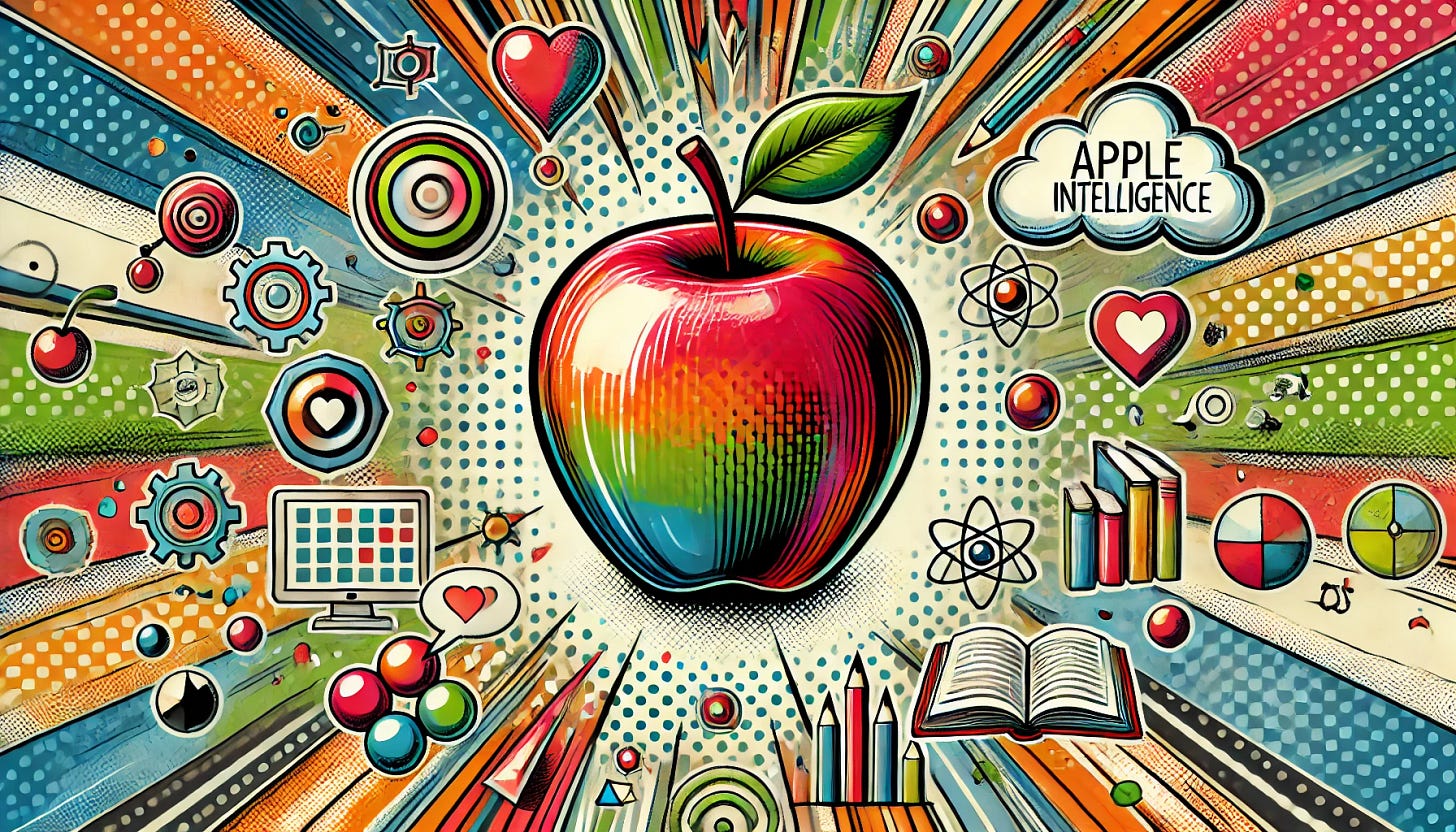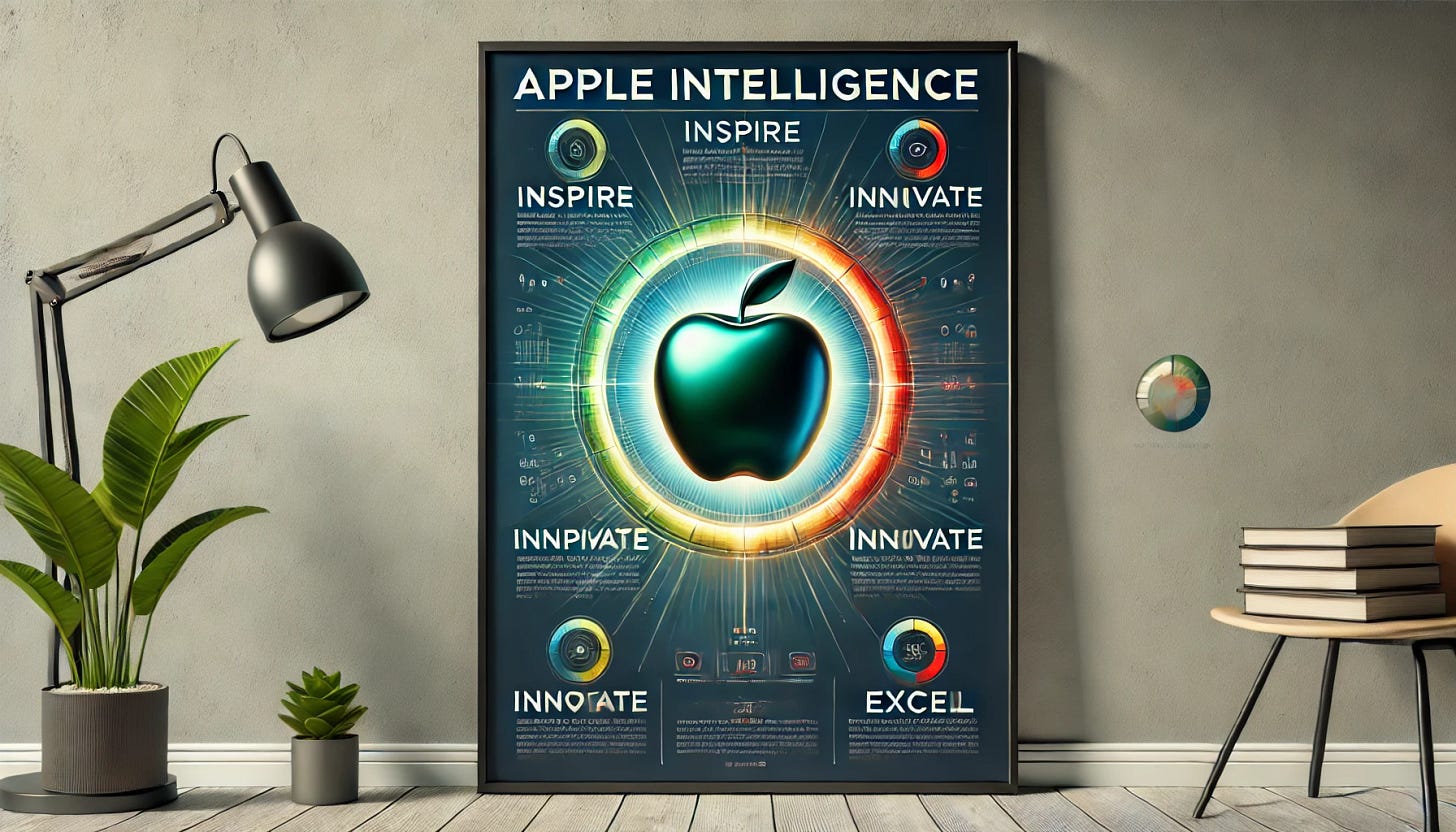What's So Smart About Apple Intelligence?
Apple's "AI For the Rest of Us" Could Be Generative AI's Mainstream Moment
According to a May 2024 survey by Pew Research Center, just under 60% of US adults have heard of ChatGPT and only 14% have ever used it. While ChatGPT certainly isn’t the only AI out there, it’s arguably among the best known after leaping into the public consciousness in November 2022 and quickly amassing a reported 100,000,000 monthly users.
Strip away the industry insider hyperbole, and you’re left with a relatively new technology that has yet to reach critical mass. Sure, its trajectory far outpaces the adoption of the washing machine, electric light, landline, or internet. But at 14% after 19 months (give or take), it might be on par with the tablet computer, which took around five years to hit 50% adoption.
And still, adoption is only one part of the problem. Pew also found that just around one-third of US adults who have tried ChatGPT found it “extremely” or “very useful.” That’s not many more than those who didn’t find it particularly useful at all, although, to be fair, a good chunk of users did say the chatbot falls somewhere in between — at “somewhat useful.”
That’s not so bad, but it may not be enough to weave LLMs and chatbots into the average person’s daily routine. And this isn’t the first sign that generative AI may fall short when it comes to delivering real value. Research by venture capital firm Sequoia Capital found that consumer GenAI applications have a tough time getting users to stick around. The fix, according to Sequoia, is “generating deep enough value for customers that they stick and become daily active users.”
And this is why the recent announcement of Apple Intelligence is so interesting.
An Apple Every Day
Positioned as “AI for the rest of us,” Apple’s take on generative artificial intelligence promises to provide the kind of utility and usability necessary to turn any new technology into a fixture of the average person’s everyday experience. The kind of utility and usability that’s sorely missing from many other AI applications, including, of course, ChatGPT itself.
If you missed Apple’s AI announcements, this short video will get you up to speed in just a few minutes.
A “Laggard” Leaps
Before Apple announced the bevy of AI features that will start rolling out with the next major release of their various operating systems (for iPhone, for iPad, and for Mac), the prevailing narrative seemed to suggest that the Cupertino company had missed the boat and ceded its place in the AI arms race.
This narrative also ignores the fact that Apple has (almost) always foregone being first, in favor of being “best.” And that the tech sector’s earliest movers often fell short of becoming its long-term leaders. We could have been using Mosaic, Alta Vista, and Six Degrees on a Kyocera 6035. We’d be downloading music to a SaeHan MPMan. Across the board, we’re not.
Anyway…
It turns out that Apple not only has powerful, proprietary AI technologies but a smart, vertically integrated strategy that differentiates its approach from others in the space.
With Apple Intelligence, I see Apple doing what Apple does best. Weaving modern technology that might otherwise be off-putting to some into a seamless, intuitive experience that aims to deliver real-world value for the greatest possible number of consumers. All while rendering the inner workings of the technology — the gears and grinds, the Python and prompts — invisible to the end user.
Apple’s genius often comes at the intersections of user-centric design, tight integration of hardware and software, a cohesive ecosystem, a strong focus on privacy, effective branding and marketing, and exceptional customer experience. The same factors are at play here, with Apple Intelligence, in a way they are not in the products that startups like OpenAI and Midjourney or even stalwarts like Microsoft and Google.
So, What’s Smart About Apple Intelligence?
Apple’s approach to AI just might be the lever that tips generative AI toward widespread consumer adoption — the proverbial iPhone moment for GenAI.
By embedding Apple Intelligence deeply into its ecosystem and focusing on ease of use, Apple is driving the consumerization of AI. This makes advanced AI capabilities a standard expectation for millions of iPhone users. As AI becomes more embedded in everyday tasks and experiences, it will likely lead to higher adoption rates and a greater appreciation of AI’s benefits.
Let’s break this down a bit.
At face value, none of these things seem to be “life changing” but they do seem to slot seamlessly into the way people really live, without requiring much behavior change at all. And this is precisely why Apple’s intelligent features might be the tipping point we’ve been waiting for.
Seamless Integration with Existing Ecosystem
One of Apple’s strengths is its ability to integrate new technologies seamlessly into its existing ecosystem. Apple Intelligence will be embedded across iOS, iPadOS, and macOS, ensuring that users can access AI capabilities without the need for additional apps or services. This tight integration makes the technology more accessible and user-friendly, as consumers can use AI features within the familiar interfaces of their Apple devices.
Enhanced User Experience Through Smart Siri
The upgraded Siri, powered by Apple Intelligence, exemplifies how AI can enhance everyday tasks. By understanding context and user intent better than ever, Siri can perform complex functions such as scheduling, reminders, and even making travel arrangements, all through natural language processing. This makes AI a more integral part of daily routines, helping to bridge the gap between occasional use and habitual reliance. AI innovators hype the potential of AI “agents” and “agentic workflows,” but few have made the leap to providing truly useful, intelligent agents capable of executing even simple tasks with autonomy. While the reality remains to be seen, a smarter Siri seems to make that leap and make it well.
Privacy and Security
Privacy concerns are a significant barrier to AI adoption. Apple addresses this by emphasizing on-device processing and robust privacy measures. Apple Intelligence processes many tasks directly on the device, ensuring user data remains secure and private. This approach contrasts with other AI services that rely heavily on cloud processing, thereby enhancing user trust and willingness to engage with AI features.
Accessibility and Usability
Apple’s focus on making technology accessible to everyone is evident in Apple Intelligence. Features such as typing to Siri, real-time translation, and AI-assisted writing tools are designed to be intuitive and easy to use. They become part of the normal experience of texting, emailing, searching, and transacting — all in the apps you already use on the device you already own. This democratization of AI tools means that even those who are not tech-savvy can benefit from advanced AI capabilities without a steep learning curve.
AI-Enhanced Creativity
Apple Intelligence also caters to creative users by integrating AI into tools like Image Playground, which allows for the creation of unique images in various styles while avoiding the “prompt engineering” wonkiness of other image generators. This makes sophisticated creative processes more accessible to the average user, enabling them to produce high-quality content quickly and easily. Features like these can significantly enhance the appeal of AI for creative tasks, broadening adoption, and making creativity “just” another normal part of communicating with the people in your network.
Utility and Real-World Applications
The practical applications of Apple Intelligence are designed to provide real-world value. For instance, AI-powered email drafting, document summarization, and photo curation are not just novelties but tools that can save time and improve productivity. By focusing on utility, Apple ensures that its AI features are not just impressive but also genuinely useful in everyday scenarios.
Marketing and Branding
Apple’s branding strategy, including the naming of its AI capabilities as "Apple Intelligence," effectively links AI with its trusted brand. This not only boosts consumer confidence but also positions AI as a natural extension of the Apple experience. Effective marketing and a strong brand narrative play crucial roles in making new technologies appealing to a broader audience.
Great for Consumers, but What About Business?
The mainstream adoption of generative AI by consumers holds significant implications for businesses. As generative AI becomes integrated into everyday consumer activities, it reshapes expectations for personalization, efficiency, and interaction with companies.
Think back to the early days of the iPhone and App Store. Mobile applications weren’t even on the radar, then rapidly shifting consumer behaviors and expectations pushed any business with even a rudimentary digital strategy to embrace mobile apps as a critical touch point. Similarly, integrating your business into the Apple Intelligence ecosystem may become a vital way of remaining relevant in the face of emerging consumer AI behaviors. Businesses that adapt to these changing expectations can gain a competitive edge by offering more tailored and responsive customer experiences.
Beyond this, it’s likely that a broad consumer uptake of Apple Intelligence (and I’m sure Google’s competitive play for Android won’t be far behind) will shape people’s expectations for AI as it is integrated into all sorts of smart devices, offered by all sorts of companies vying for a place in people’s day-to-day lives.
Want More on Apple Intelligence?
On this week’s episode of our No Brainer podcast, Geoff Livingston and I share our takes on Apple Intelligence, including our thoughts on how Tim Cook got the better of Sam Altman by making ChatGPT an optional add-in for Siri rather than a standalone chatbot for iPhone users. (We jump into our discussion of Apple around the 20-minute mark.)








